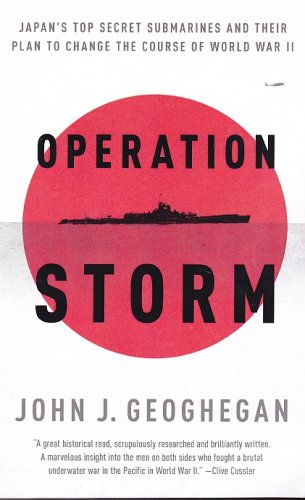johngeo
Reporting on White Elephant Technologies
I'm the author of a recently published non-fiction book, "Operation Storm: Japan's Top Secret Submarines and Its Plan to Change the Course of World War II."
"Operation Storm" tells the true but little known story of the USS Segundo's (SS 398) hunt, pursuit, and capture of Japan's I-401 submarine in the closing days of World War II.
For perspective, the I-401 was essentially a giant, underwater aircraft carrier purpose-built by Japan to launch a surprise aerial attack against New York City and Washington, DC as a follow up to Pearl Harbor. The subs were on their way to complete their mission when the war ended. The I-401 refused to surrender, however, went rogue and had to be tracked down by the Segundo in a confrontation that risked reigniting hostilities only four days before the instrument of surrender was to be signed in Tokyo Bay.
I'm writing because I used Secret Projects as a research resource while writing OPERATION STORM and thought its members might share my interest in this amazing but little known subject.
You can learn more about OPERATION STORM by visiting the book's website at: www.operationstormbook.com
I also welcome and comments or observations you may have about the I-400 subs and their Aichi M6A1 attack planes.
Kind regards, John J. Geoghegan

"Operation Storm" tells the true but little known story of the USS Segundo's (SS 398) hunt, pursuit, and capture of Japan's I-401 submarine in the closing days of World War II.
For perspective, the I-401 was essentially a giant, underwater aircraft carrier purpose-built by Japan to launch a surprise aerial attack against New York City and Washington, DC as a follow up to Pearl Harbor. The subs were on their way to complete their mission when the war ended. The I-401 refused to surrender, however, went rogue and had to be tracked down by the Segundo in a confrontation that risked reigniting hostilities only four days before the instrument of surrender was to be signed in Tokyo Bay.
I'm writing because I used Secret Projects as a research resource while writing OPERATION STORM and thought its members might share my interest in this amazing but little known subject.
You can learn more about OPERATION STORM by visiting the book's website at: www.operationstormbook.com
I also welcome and comments or observations you may have about the I-400 subs and their Aichi M6A1 attack planes.
Kind regards, John J. Geoghegan

